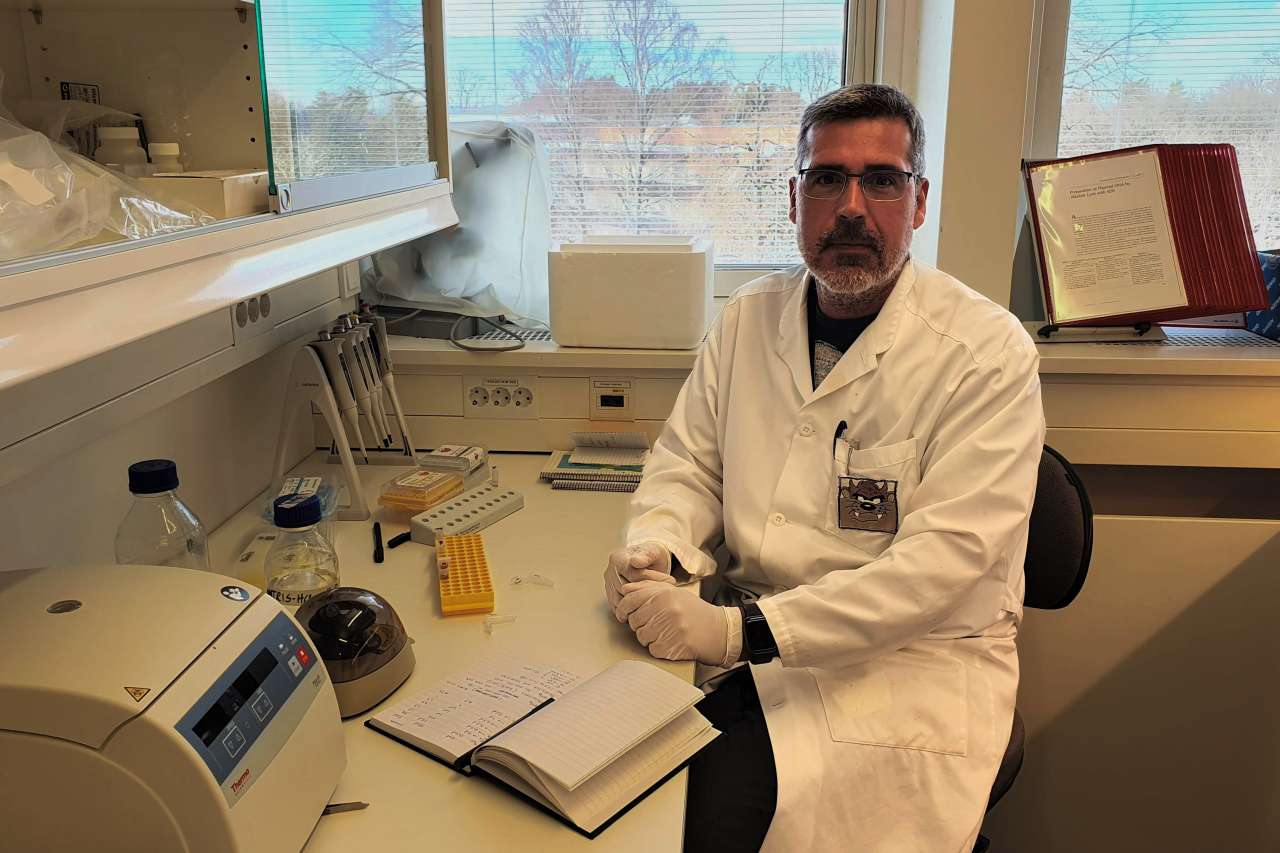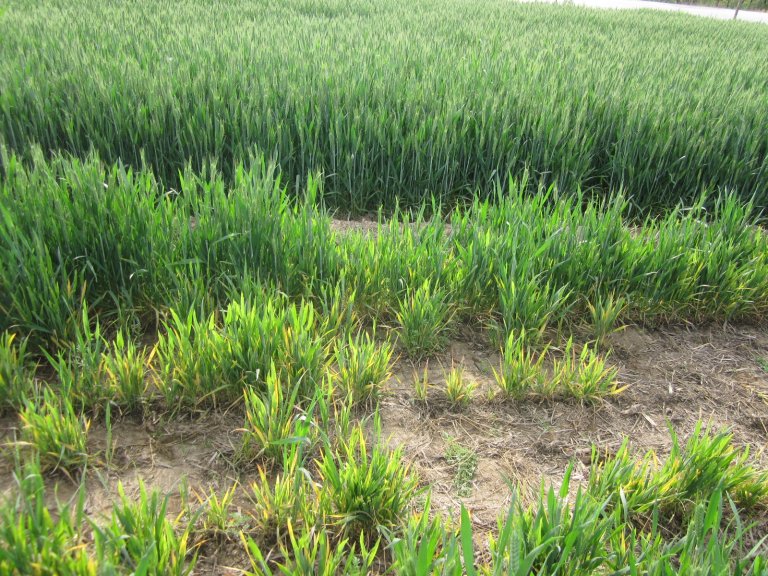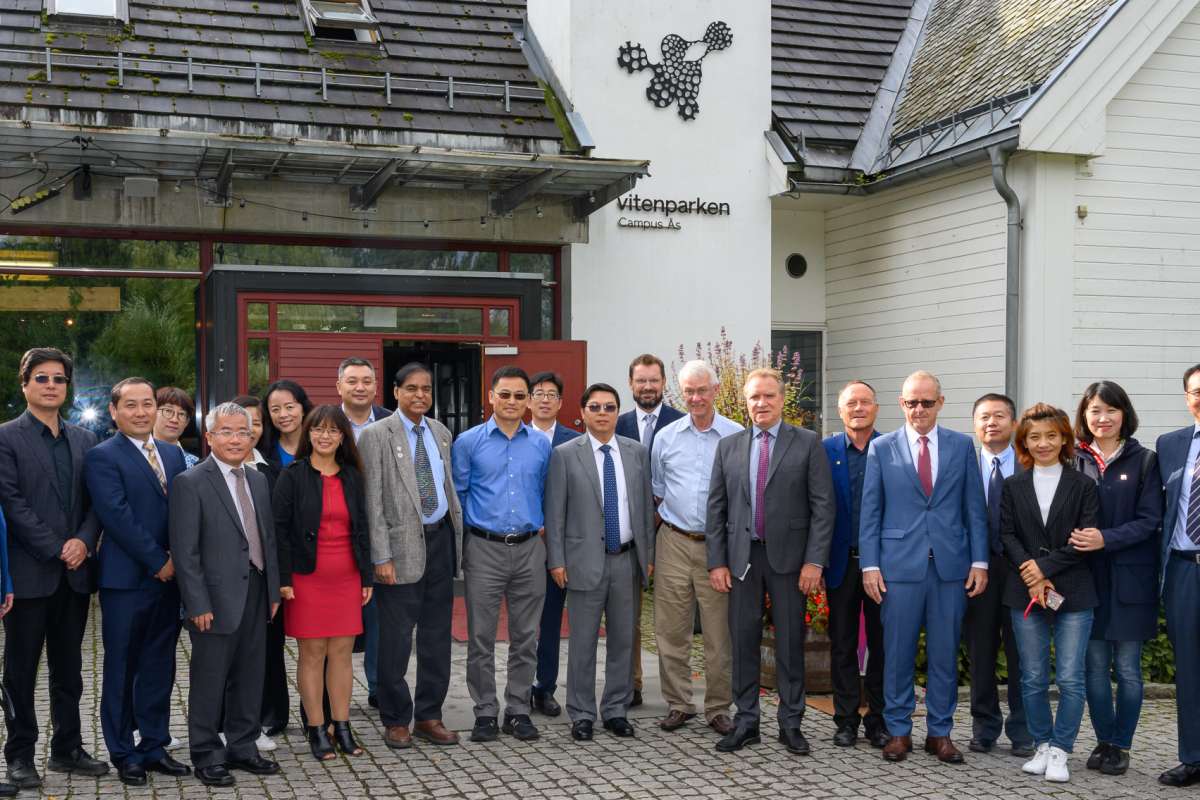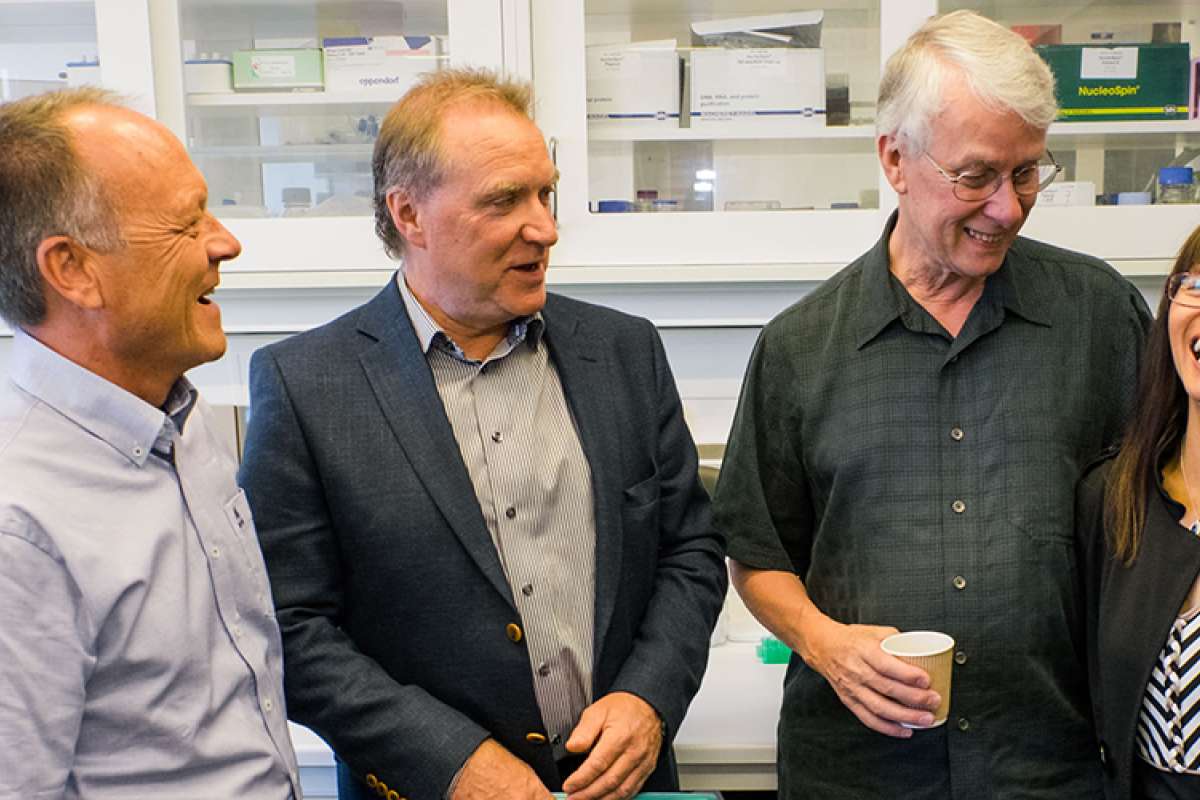CRISPR and Next Generation Sequencing can help control destructive wheat virus

"To date, 200 different viral species are known to infect cereals worldwide. Wheat dwarf virus is the most damaging wheat virus in China, and one of the most important wheat-infecting viruses in Norway", says Research Scientist Carl Jonas Jorge Spetz at NIBIO. Photo: Siri Elise Dybdal
Through applying novel, cutting-edge techniques, Norwegian and Chinese scientists are creating cereals that are resistant against wheat dwarf virus and gaining new knowledge on the plant proteins and genes involved with the virus.
Cereals are dominant staple food crop grown globally, and among the most important crops in the world. However, cereals are affected by pathogens, insect pests, and weeds. Amongst these, viruses in cereals are the most challenging, as viral diseases cannot be controlled using fungicides. Once a viral disease is established in a field, there are no means by which it can be eradicated.
To date, 200 different viral species are known to infect cereals worldwide. Wheat dwarf virus is the most damaging wheat virus in China, and one of the most important wheat-infecting viruses in Norway. Finding sustainable measures to help farmers fight such viruses is vital to ensure food security.
The development of new more efficient tools in biotechnology could be part of the solution. In a collaborative project, scientists from NIBIO and the Chinese Academy of Agricultural Sciences (CAAS) are using the genetic editing tool CRISPR and Next Generation Sequencing (NGS) to uncover new knowledge on the plant proteins and genes connected to the infestation of the virus in plants, and ultimately create resistant and virus free plants.
Winged insect transmit virus
Most cereal viruses, including Wheat dwarf virus, are transmitted by a flying insect. Due to climate change, it is believed that these winged insect vectors will become an increasing threat to sustainable agriculture all over the world, including Norway and China. It is therefore of great importance to understand the biology of viruses and device methods to control viral diseases that might propose a risk for crops in the near future.
“In this project, we are studying the molecular interactions between the virus, the vector and the host using cutting-edge molecular techniques. We have discovered various plant proteins that might have an important role in the transmission of the virus by the vector. This has been accomplished using a proteomic approach - a highly complex protein screening technology for biological understanding on a wide-scale level”, says Carl Jonas Jorge Spetz, scientist at NIBIO.
Utilising next generation sequencing, the scientists have also determined various plant genes which seem to be involved in the ability of the virus to infect the plant. The scientists have used the identification of the plant proteins and genes to develop a gene editing strategy to generate resistance to the virus.
“Using CRISPR, we have been able to make small mutations in genes we have identified by NGS and proteomics and currently determining if they provide resistance to the virus. The beauty about CRISPR is that in the final stage, the plants only contain a single mutation and should not be considered GMOs”.
“We have also developed the ability to test if our plants are resistant at a cellular level and to locate where in the cell the viral nucleic acid is present. This is something that was not possible before. In plants, we are the only group doing this”, Spetz comments.
He adds that using the different methods and technologies and uncovering what can be achieved is an important aspect of the project and have resulted in enhancing their “CRISPR toolbox.”
“Actually, due to Covid and difficulties meeting up, we had to work a lot in the lab separately, and this forced us to re-think our strategies and find other ways to try to accomplish our goals”, he says.
Clean plant material
Working with CRISPR has also led to explore other applications of this technology. For example, Spetz explains that through new CRISPR vectors (developed by NIBIO) they are attempting to remove the viruses from plant cells. This is an important measure with great potential to produce clean planting material, which ensures that farmers can use disease-free planting material.
“We have made our own CRISPR vectors and inserted these into the plant cell hoping that this will remove the virus. Theoretically this is possible, but we are still in the stage of “experimental proof of concept” and chances of success are unknown”, Spetz underlines.
Important to collaborate
The project is one of several research collaborations between NIBIO and CAAS with focus on food security and sustainable agriculture.
Spetz says such transfer of scientific knowledge is vital if we are to solve the great global challenges.
“The Chinese scientist group is super strong. They are leading scientists in CRISPR. Our collaboration is very fruitful, and we plan to continue”, he says.
Spetz explains that CRISPR and the advancement in technologies opens many new doors to what can be achieved.
“As a scientist, my goal is to invent novel concepts and CRISPR creates new opportunities for this. My motto is that I would rather fail doing something new, then succeed doing something that is already done”, the NIBIO-scientist concludes.
Contacts

Wheat dwarf virus
Wheat dwarf virus (WDV), a mastrevirus transmitted by the leafhopper Psammotettix alienus, causes a severe disease in cereal crops around the world with great economic impact. Typical symptoms of wheat plants infected by WDV are yellowing and severe dwarfing.
CRISPR
CRISPR-Cas9 is a unique technology that enables geneticists and medical researchers to edit parts of the genome. CRISPR works kind of like "gene scissors" that can remove, insert or swap pieces of DNA as desired, in any type of living organism. It is hoped that the tool could help solve challenges associated with food security, climate change and sustainability.
Next Generation Sequencing (NGS)
Next Generation Sequencing (NGS) is a technology that speed up and reduce the cost of DNA sequencing. It determines the sequence of DNA or RNA to study genetic variation associated with diseases or other biological phenomena. NGS has revolutionised the biological sciences, allowing labs to perform a wide variety of applications and study biological systems at a level never before possible.

Contacts


.jpg?quality=60)


